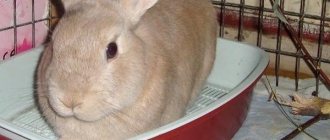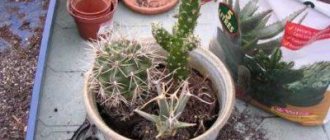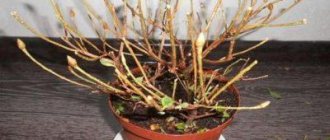Is it possible to wash rabbits?
Bathing a decorative rabbit is not recommended for several main reasons:
- It is quite difficult to hold a pet correctly and securely, since he is simply not enthusiastic about such an event. As a result, you will have a lot of scratches, and the rabbit himself will be incredibly stressed.
- Hard water in combination with low-quality shampoos produces a terrible effect - its natural shine is removed from the coat. One wash will not affect the health of the fur coat, but regular bathing can easily cause baldness of your pet.
- The animal's fur is very thick and does not dry well. You will not be able to completely dry your pet; put it in a cage while still wet, which can provoke a life-threatening cold for the animal.
Many owners who wonder whether it is possible to bathe decorative rabbits receive a categorical “no” in response.
But still, unpleasant moments arise when you need to wash your pet:
- It happens that it gets dirty to such an extent that it is scary to look at it. You can shake off the shavings, but if he comes across something sticky while walking around the apartment, you need to use water.
- It is necessary to wash your fluffy when diarrhea occurs. A decorative rabbit is not allowed to lick itself, so the source of dirt must be removed from its body.
- Veterinarians recommend washing your pet if there is heatstroke.
If you still need to buy your decorative pet, it must be done correctly and carefully.
General washing recommendations
Any decorative rabbit must be washed according to the basic instructions, which will help you do everything correctly and safely:
- Identify areas of contamination and wash only those areas. This is done exclusively with warm water with the addition of a special shampoo for rabbit fur.
- You should not use a shower - a small basin with warm water is enough to prevent droplets from getting into your ears.
- Ask someone close to you to help you, as it can be simply impossible to keep an active rabbit alone.
- At the end of the procedure, quickly dry the baby. This can be done with a hairdryer, but only with a warm stream of air, not hot.
However, you should not bring your pet to bathe. After all, diarrhea occurs due to improper nutrition, and in this case the pet can get dirty solely because of your carelessness.
If the baby has yellow paws, you need to analyze how many times the cage is removed. Be prepared to offend your pet, as decorative rabbits do not like to come into contact with water under any circumstances.
Are water treatments necessary?
Almost all veterinarians categorically prohibit such procedures, noting that rabbits are very clean and in nature rarely come into contact with water, so they take care of their fur by licking themselves with their tongues.
In addition, frequent bathing can damage the lipid layer of the skin, which undoubtedly affects the quality of the coat. This is especially true for show breeds.
A rabbit must be taught to bathe gradually, from a young age, since an unprepared animal, having experienced stress, may die from this procedure.
Rodents of this species do not really like water, although they can swim if such a chance arises. There is plenty of information in various sources on bathing rabbits, but there is no categorical prohibition, so you can bathe an ordinary or decorative rabbit in the following cases:
- got dirty while walking;
- gastrointestinal disorders;
- untimely cleaning of the place where the animal is kept (cage);
- unpleasant odor from the animal;
- fur stains that cannot be removed with a damp cloth;
- exposure to chemicals and household chemicals on the fur.
And if such a need arises, you can contact a specialist (groomer) to bathe your pet. If you decide to do this at home, ask someone to help you so that the rabbit, being frightened, does not jump out of the basin or sink and injure itself and the owner.
The following procedures are strictly prohibited:
- wash livestock rabbits, as miscarriage may occur under stress or due to temperature changes;
- bathe small rabbits, since they have very delicate skin and fur, a poorly organized lipid layer on the skin;
- use the shower;
- wet the face, eyes and ears - water that gets into the ears and eyes can cause an inflammatory process in the ears (otitis media) and in the eyes (conjunctivitis).
In general, you should not create stress for an animal, as this can have a detrimental effect on its life and health.
How to bathe at home?
There are two types of bathing: full and partial. How to wash a rabbit is decided by the owner himself, based on the nature of the dirt.
Full bath
It is rational if the pet is completely dirty. The prepared basin is filled halfway with warm water, the temperature of which should not exceed 36-40°C.
The animal is placed in a container: one person holds it, and the second carries out all the necessary manipulations. The body is thoroughly soaped, with the exception of the head.
If the body is heavily soiled, changing the water is allowed. Then the fur needs to be rinsed with warm water and soap for several minutes.
It is important that it does not get into your ears. Therefore, for lop-eared breeds, they are fixed before washing.
You need to pay attention to ensure that the cleaning agents are completely washed off the fur coat. After all the manipulations, the little ear will lick itself and may be poisoned by the remnants of soap or foam.
Partial
A partial type of procedure is used when the area of contamination is small. If only the paws or the area near the butt are dirty, then you don’t have to use the basin.
The whole process is carried out under a tap or shower, while the owner holds his pet in his arms. The procedure is similar with the full face, the only exception being that you only need to soap the dirty areas of the body.
Washing in a basin
Choose a suitable basin that the animal can fit in and feel as comfortable as possible in the given situation. Prepared water at a temperature of 30-37 degrees is poured into a basin, the water level should not exceed 3 cm. A small amount of shampoo is dissolved in the water.
The assistant then places the rabbit in the basin, using the hind legs first. Lather the contaminated coat with the solution from the basin, trying to prevent water from getting into the eyes, nose and ears.
Next, thoroughly rinse the detergent from the animal’s fur with clean water from a small container. After bathing, an animal usually licks itself, so it is necessary to prevent this solution from entering the animal’s gastrointestinal tract.
After washing, you will need two towels: one that is absorbent, used for drying, and the second for wrapping to warm the fluffy.
Washing under the tap
Washing under a tap is not significantly different from washing in a basin, although there are some peculiarities. The water in the tap is adjusted to a temperature of 35-40 degrees. Also fill the sink or bathtub with water to a level of 3 cm.
To help your rabbit feel safe, place a towel at the bottom of the sink or bathtub. First, moisten the coat with tap water, then apply a small amount of product to the coat from a tube of shampoo.
Distribute the shampoo evenly over the pet’s entire body, then rinse off the foam with running water. The procedure of wiping and wrapping is carried out in the same way as in the previous case.
How to bathe decorative rabbits?
Experts believe that a partial view is suitable for the hygiene of decorative species. It is the most gentle for the animal and protects against excessive stress.
Decorative breeds are more delicate than productive ones, so all manipulations must be approached with the utmost caution.
Eared cats are often very clean, as they lick themselves like cats.
This species' fur changes every 6 months. If the owner combs out his furry pet on time and cleans his cage, then bathing will not be necessary at all.
Important! You should not immediately decide to bathe your ornamental pet if you find fleas on it. Experts recommend getting rid of insects using special products that drip onto the animal’s withers.
You cannot wash the animal in the bathroom; use a basin or sink for this purpose. The water temperature should not be too hot or cold. To avoid injury to the animal, you should always use the help of a second person.
It is advisable to wash only soiled areas of the body. You can bathe a dwarf rabbit without using any products; in case of severe contamination, you can use a special rabbit shampoo.
Important! Water should not get into the fluffy's ears and nose.
After bathing, you need to wrap your pet in a towel and dry him. You shouldn’t let your long-eared dog go for a walk right away; let him dry out completely.
What can I wash it with?
First of all, the rabbit breeder will need to prepare the room for bathing: make sure that all the windows are closed to avoid drafts, remove unnecessary objects that interfere with the process.
To wash your pet use:
- basin;
- towel;
- special means;
- hairdryer
As a bathing agent, you can use a special shampoo for rabbits or baby soap. When choosing the first option, you should pay attention to a product that does not contain the SLS component, which negatively affects the health of eared animals.
The use of soap is allowed, but it must be free of any harmful impurities, dyes and fragrances.
Important! Do not use laundry or regular soap.
Swimming without water
In some cases, dirt can be cleaned, but without resorting to water procedures. The fur can be cleaned with a soft brush from adhering lumps of dirt, and then you can let your pet “wash itself” on its own.
Veterinary pharmacies sell special wet wipes for care. After consultation with a veterinarian, you can use them on the genital area and paws. It is important to ensure that no irritation occurs after use.
Bathing process
Baby soap easily and carefully cleans the fur of a decorative rabbit.
It is clear that the animal will be very scared of bathing, so for the first time, and subsequent times, it is recommended to bathe the rabbit together, so that one person holds the animal and the second washes it. There is no need to fill the bathtub; just pour water at room temperature into a small bowl or bowl. Under no circumstances should toilet soap be used; it is better to use a special product for rabbits, such as shampoo. If there is no special product, then you can use baby soap. It easily and carefully cleans the animal's fur, without causing inconvenience or anxiety.
After soaping, you need to thoroughly rinse off the detergent, but under no circumstances should you water the animal’s ears. If water gets into the ears, there is a risk of developing ear disease, which will lead to chronic inflammation and hearing impairment. After washing, you need to thoroughly dry the rabbit, almost dry. If necessary, you can change several towels. Since the animal's fur has a very pleasant density, it needs to be dried as soon as possible.
If the rabbit is not afraid of a hairdryer, then you can dry it with it. But more often than not, rabbits are sensitive to loud noises, so the easiest way is to use a towel. With frequent bathing, the color of a rabbit's fur may change as the detergent washes away the natural protection and the color gradually fades. Therefore, it is not recommended to wash your rabbit more often than necessary. This is how it is laid down by nature itself. After bathing, put something tasty in his feeding cup, because this procedure will spoil his mood. And for harmony in the house it is necessary that all household members get along with each other.
Place him in an aviary or cage. Let him dry himself in his personal space by licking his fur. Decorative rabbits are like little children; cold and drafts are contraindicated for them. Before bathing the animal, you need to close all the doors and windows in the house so that the rabbit does not catch a cold. After the rabbit has dried off and recovered a little from the stressful situation, you should not be surprised that he does not want to come over or play. His resentment can be so strong that for several days he will hide from his owners, especially from the one who bathed him. Therefore, you need to find ways to make amends, and he will definitely forgive you.
Is it possible to blow dry a rabbit?
To protect your animal from diseases and dry it faster after bathing, you can use a hairdryer. It is turned on to the minimum setting, the distance between the hair dryer and the pet should not exceed 50 cm.
Important! During drying, you can use special brushes to comb the fur.
Owners of decorative breeds should, whenever possible, do without using a hair dryer. This tool makes a lot of noise, which can only increase the animal’s stress from being in the water.
In addition, rabbit skin is very sensitive to high temperatures, so when you turn on the hair dryer at maximum power, your pet can get burned.
Note! After washing your rabbit for several hours, it is important to avoid drafts. After visiting the bath, the animal is several times more likely to catch a cold. You should not swim in winter.
Can rabbits swim?
Rabbits live on land and run well. But they are not inferior in swimming. There is no need for rabbits to jump into water, although they may well do so if there is danger.
You shouldn't teach a rabbit to swim either. This fun can turn into tragedy if water suddenly gets into your ears, nose or mouth.
By itself, the rabbit swims “like a dog”; it can stop and drift through the water without moving because. fluff (especially in females) easily keeps them afloat.
Some rabbits even enjoy swimming. They throw themselves into the lake/sea/bath/basin of water. Such rabbits can be trained to do this as a team. But if the rabbit shows fear and fear, you shouldn’t do this!
Dry method
The dry method involves cleaning the rabbit's fur using waterless shampoos and sprays. Waterless shampoo is sprayed onto the pet's coat, rubbed in with your hand or a small towel, then the coat is combed out. The spray should be sprayed especially carefully so as not to get into the ears and eyes.
It is very convenient to use such products before exhibitions and in the absence of water, but they cannot completely replace regular bathing. In addition, the spray shampoo helps to comb long-haired animals and untangle mats. Spray with mink oil retains moisture well, smoothes the coat and protects the skin from drying out. Some sprays are preventative against skin parasites.
Another product that can be used when there is no water is dry shampoo or cleansing powder. Dry shampoo has good cleaning, deodorizing and absorbent properties. After it, the wool becomes shiny, fluffy and smells pleasant. It is sprinkled on the contaminated area, then combed out clean.
Just like a spray, it is used only when partially contaminated.











